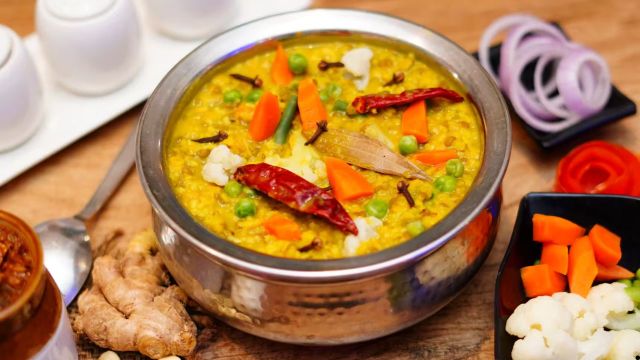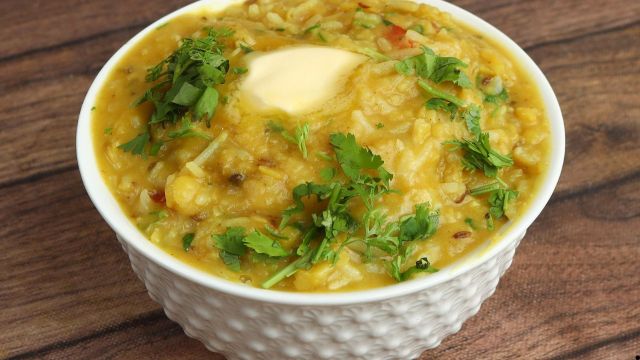India is a very diverse country, and food habits change every few hundred miles. Khichdi is one dish that brings everyone together. People turn to that bowl of comfort when they’re tired, sick, homesick or just want something light but filling. It’s simple, healthy and can be made in so many ways. Khichdi is more than just a recipe; it’s a feeling that people have shared for generations.
The Simple Beginnings
For hundreds of years, Indian kitchens have made khichdi. It has been a part of meals for a long time, from royal courts to rural homes. The oldest mentions of it are in ancient texts. It’s easy to understand: rice and lentils cooked together, usually with ghee and mild spices. But each area has added its own twist, making this simple meal very personal.
For some, it’s the first real food they give their babies, and for others, it’s the meal they turn to when they need comfort after a long day. It doesn’t need a lot of prep work, which is what makes it so appealing. Khichdi always calms both the body and the mind, even when the ingredients are very simple.
The Classic Version of North Indian Khichdi
In North India, people often make khichdi with moong dal and rice, and they add cumin, ghee, and a little bit of asafoetida to it. Some people like it runny and soupy, while others like it thick and hearty. Papad, achar (pickle) and curd are usually served with it. In the winter, a dollop of homemade ghee or butter on top makes it even tastier.
People in Uttar Pradesh and Bihar like to eat “bajre ki khichdi” or “masoor dal khichdi” when it’s cold. These versions are a little spicier and have strong flavor.

Gujarati Khichdi: The Meal That Is Just Right
Khichdi is more than just a comfort food in Gujarat; it’s a staple. It is light, fragrant, and often made with split moong dal. It is served with kadhi, a curry made with yogurt. Khichdi, kadhi, and ghee are a classic Gujarati dinner that tastes great and is good for you at the same time. No matter where you eat it, in a city apartment or a country kitchen, it feels like home.
Bengali and Odia Khichuri: A Treat for the Holidays
Khichdi, or khichuri as it’s called in Bengal, is a festive dish. People make it for religious events, especially Durga Puja, when it is given as bhog. It tastes rich and a midly spicy. It has vegetables like peas, potatoes and cauliflower, as well as ghee and garam masala. You get labra (a curry with a lot of vegetables) and crispy papads with it. In Odisha, a similar dish called bhog khichdi is just as important to the culture, especially when it comes to temple offerings.
Pongal from South India: The Southern Cousin
Khichdi becomes Ven Pongal in the south. This dish is smooth, spicy and very filling. It is made of moong dal, rice, black pepper, curry leaves and cashews fried in ghee. In Tamil Nadu and Karnataka, some people usually eat it for breakfast with coconut chutney and sambar.
Sakkarai Pongal is a sweet version made with jaggery, ghee, and cardamom. People eat it during festivals like Pongal and Makar Sankranti.
New Takes on Khichdi
Khichdi has become popular in city restaurants and gourmet menus in the last few years. Chefs are trying out quinoa, millets, and brown rice to make a meal that is good for you. In fine dining places, you can find fusion versions of khichdi, like spinach khichdi, beetroot khichdi or even truffle-infused khichdi.
How to Order Your Favorite Khichdi with Just a Click
Zomato brings all of your favorite dishes to your table, whether you want the homely moong dal, the festive Bengali khichuri, or the spicy South Indian Pongal. You can quickly find nearby restaurants that serve real regional khichdis, read reviews, and order your favorite style, whether it’s light, spicy, or gourmet. A lot of places also have healthy or vegan options, which keeps up with modern tastes without losing their authenticity.
So, the next time you want something that feels like a hug in a bowl, don’t bother cooking. Just open Zomato. A warm, fragrant serving of khichdi, India’s original comfort food, will be on its way to you. It’s fresh, simple, and just like home.
Related Stories:



